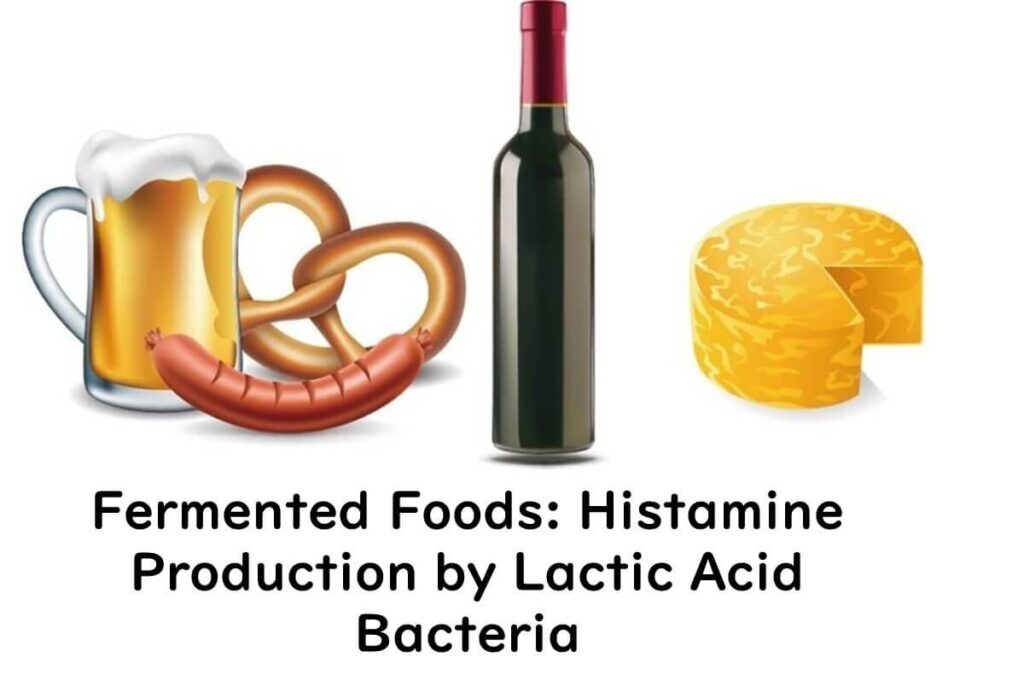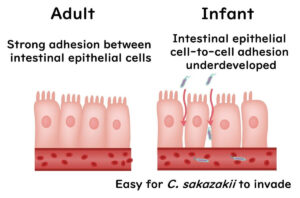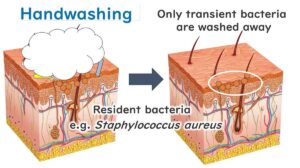In this article, we will explore the types of food that commonly lead to histamine food poisoning, the causes, symptoms of histamine food poisoning, prevention methods, the bacteria that produce histamine, why the histidine decarboxylation reaction occurs in bacteria, the fact that heating food does not eliminate histamine once it's formed, and the misconception that fish is the only cause of this issue.
What is Histamine Poisoning?
Histamine food poisoning, sometimes triggered by consuming fish dishes like teriyaki, occurs a few times a year in school cafeterias and catering services. Histamine is an irritant that can cause allergic reactions, similar to the substances involved in hay fever.
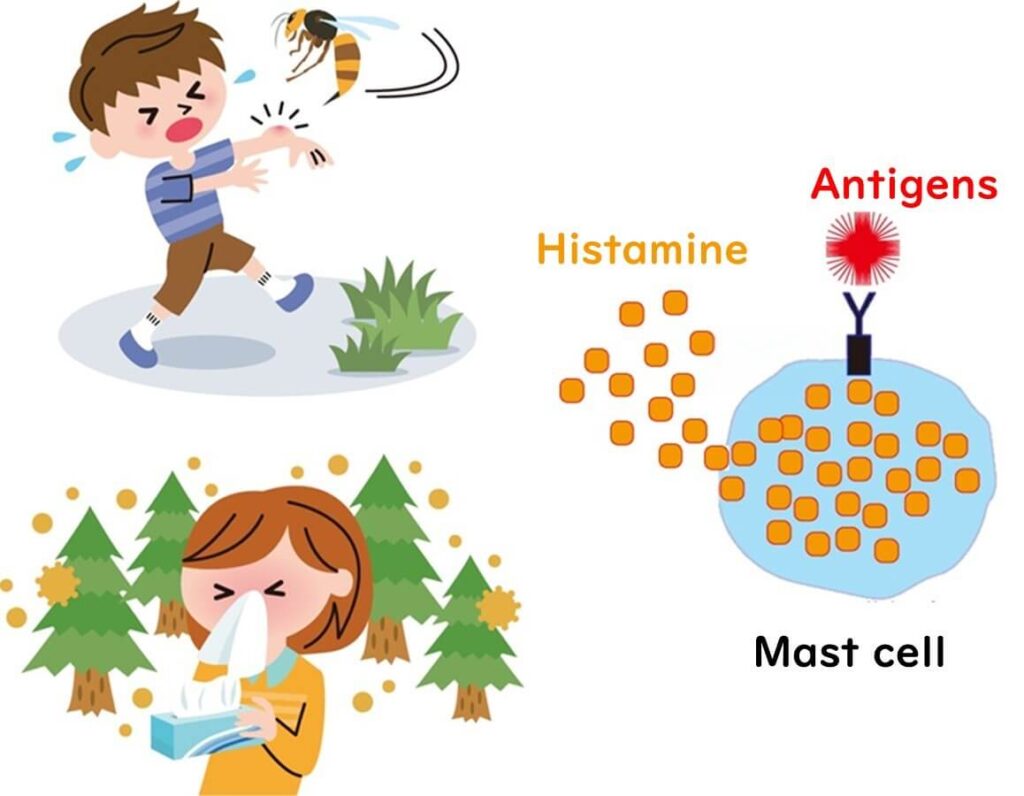
Bacteria That Produce Histamine
Histamine-forming bacteria proliferate in fish meat, leading to histamine production. Bacteria like Morganella morganii and Klebsiella, which belong to the family of Enterobacteriaceae and are gram-negative, are primarily responsible when it comes to fish. These terrestrial bacteria contaminate fish either while they swim in coastal waters or after being caught. Additionally, certain marine bacteria, such as Photobacterium damselae, are also known to produce histamine.
It's important to note that histamine food poisoning is caused by bacteria, but it is not an infection from the bacteria themselves, nor is it due to toxins produced directly by the bacteria. Rather, the poisoning occurs when bacteria convert histidine, an amino acid naturally present in fish, into histamine.
Symptoms in patients are akin to an allergic shock due to excessive histamine in the body. While hospitalization may be necessary, many patients are discharged the next day. However, delayed treatment, especially in cases of respiratory distress, can be life-threatening.
Foods Prone to Histamine Poisoning
Let's discuss foods that are susceptible to histamine poisoning. Fish with darker flesh like tuna, mackerel, sardines, and bonito, contain more of the raw material for histamine production compared to white fish and meat. These fish don't initially have histamine; it's formed when bacteria convert the amino acid histidine into histamine.
The reason these darker fish have more basic amino acids like histidine is due to their higher activity levels. Bottom-dwelling fish like flounders and sea bream are less active, mostly staying still at the seabed and only moving quickly when threatened. In contrast, migratory fish like tuna and sardines are constantly swimming, accumulating lactic acid in their muscles. This acid lowers muscle pH, which is harmful. To counteract this, the fish's body needs more basic amino acids like histidine to raise the pH.
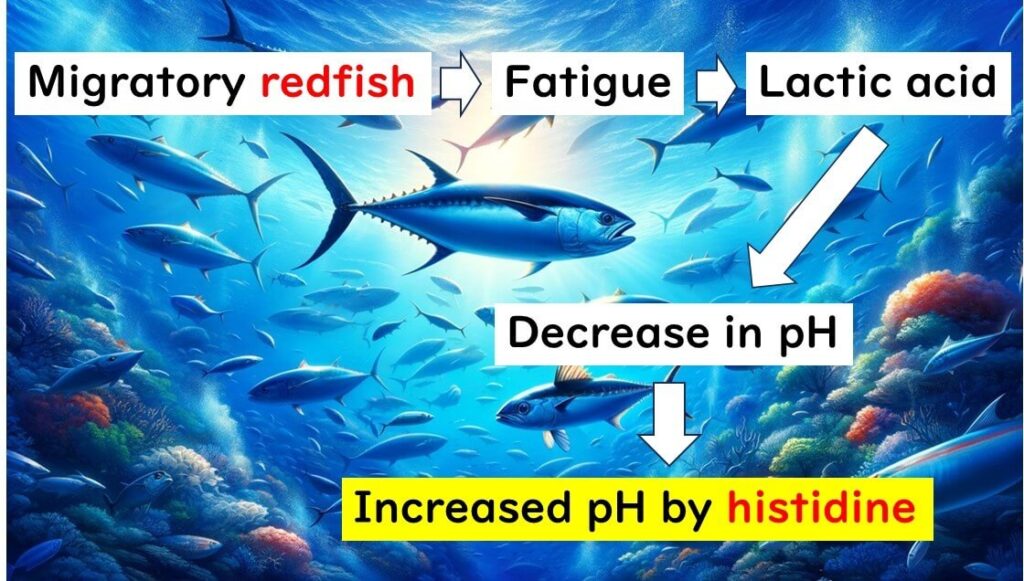
Furthermore, these migratory fish have darker flesh because they require efficient oxygen transport throughout their muscles, facilitated by oxygen-carrying pigments like hemoglobin and myoglobin in their blood and flesh.
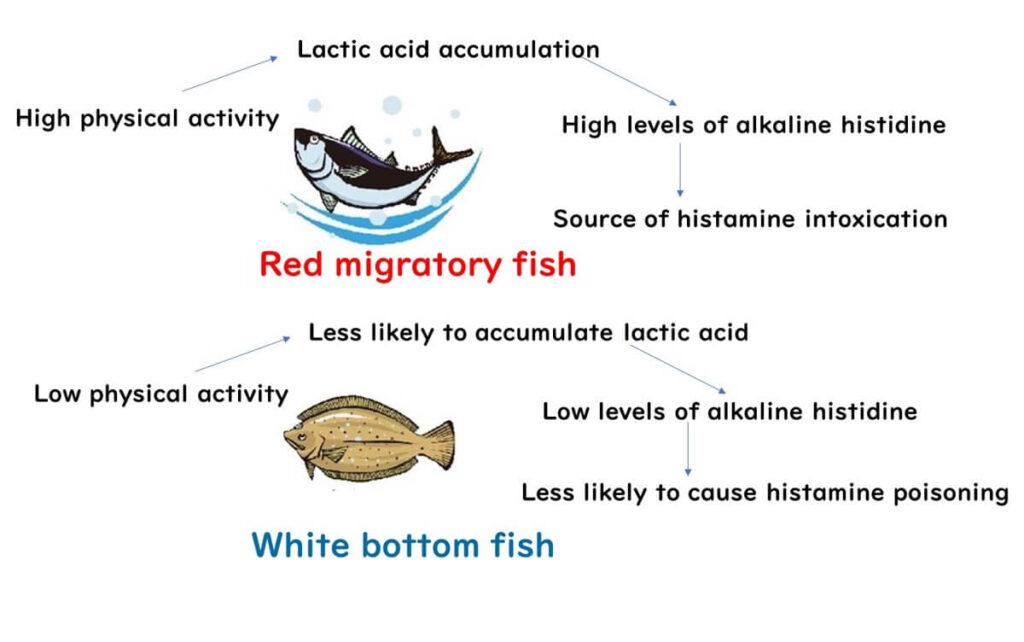
In short, these darker fish are more prone to histamine poisoning due to their higher histidine content, which bacteria convert into histamine.
How to Prevent Histamine Poisoning?
So, how can we prevent histamine poisoning? The incidence of histamine food poisoning was more common in the past but has decreased significantly with advancements in freezing and refrigeration technologies. Keeping the temperature below 10°C inhibits bacterial growth. Therefore, maintaining strict temperature control, never allowing the temperature to exceed 5°C from catch to kitchen, is crucial in preventing histamine food poisoning.
However, once formed, histamine cannot be destroyed by cooking. In such cases, there's no change in color or odor, with the only clue being a pungent taste described as "tongue-bite" by seafood processors. This taste becomes indiscernible when the food is heavily seasoned. In fact, many past cases of food poisoning involved heavily flavored dishes like grilled or broiled fish, or fried items. Once histamine levels increase in food, the only option is to discard it. Thus, vigilance in temperature control is key to preventing histamine food poisoning.
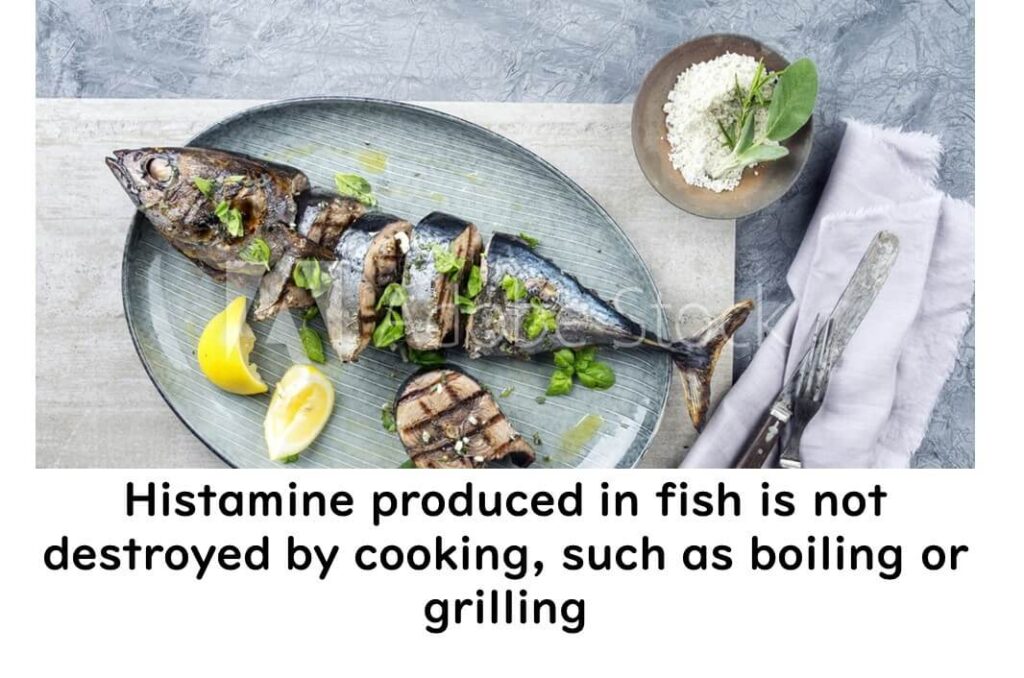
Why Do Bacteria Produce Histamine?
Why do bacteria create histamine from histidine and expel it outside the cell? When bacteria absorb histidine, they typically use it to synthesize proteins. However, in the case of histamine production, bacteria take in histidine and release histamine externally. There must be a purpose behind every microorganism's actions, and certainly, bacteria do not convert histidine to histamine to cause histamine food poisoning in humans. It's a misconception to believe that microorganisms target humans when producing toxins.
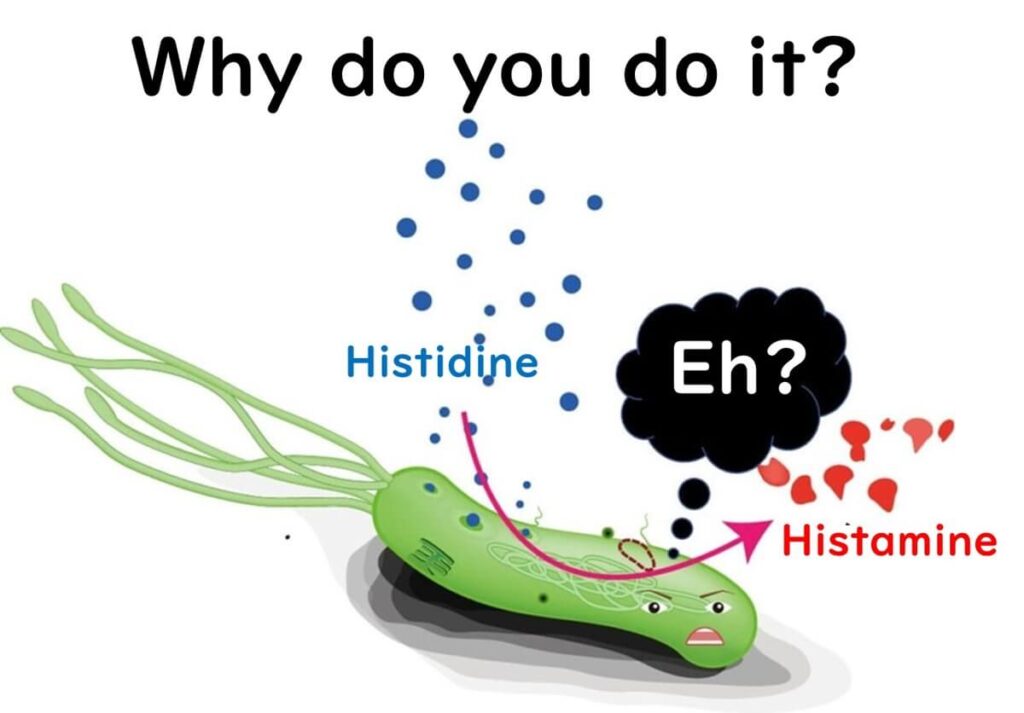
Usually, when bacteria absorb amino acids, they use them for protein synthesis. But with histamine production, bacteria absorb histidine and expel histamine outside the cell. Why would histamine-producing bacteria engage in this seemingly futile act?
When bacteria deaminate amino acids, it's easy to understand their purpose: they transform the amino acids into carboxylic acids, which are then broken down into carbon dioxide through the citric acid cycle, providing energy for the microbes.
However, what is the purpose of bacteria decarboxylating amino acids, a process that doesn't generate energy for them?
The answer lies in the bacteria's self-defense mechanism when placed in a strongly acidic environment. The conversion of histidine to histamine is a reaction that decarboxylates the carboxyl group of histidine. During this process, a hydrogen ion is consumed, thereby shifting the internal pH of the microbe towards alkalinity. This is considered a defense mechanism against harsh acidic conditions. Interestingly, histidine is not the only amino acid that undergoes such reactions. For example, the decarboxylation of glutamic acid results in 4-aminobutyric acid, lysine becomes cadaverine, and arginine turns into agmatine, all of which are amines.

Such decarboxylation reactions serve as a defense mechanism for bacteria against acidic environments. In fermented foods like sausages and cheese, histamine can accumulate because these products become acidic due to the action of lactic acid bacteria. These bacteria produce lactic acid, making their surrounding environment acidic. If the environment becomes too acidic, it can threaten their survival. Therefore, lactic acid bacteria have systems to decarboxylate amino acids, thereby defending themselves against the acidic environment they create.
